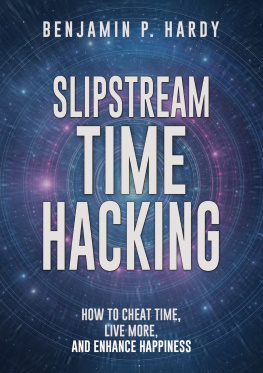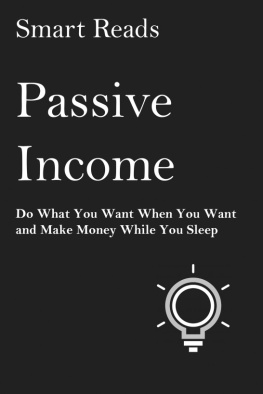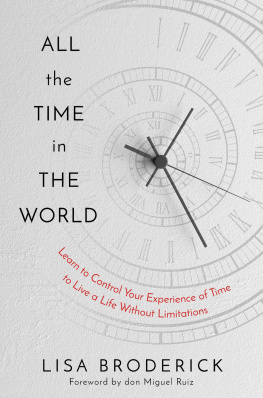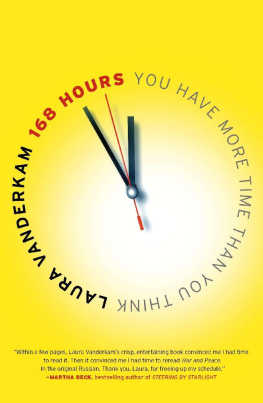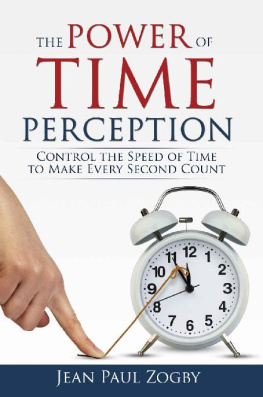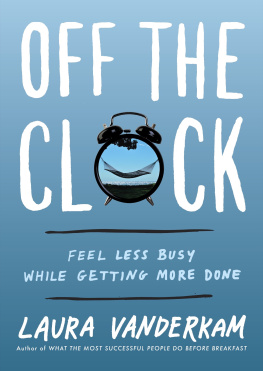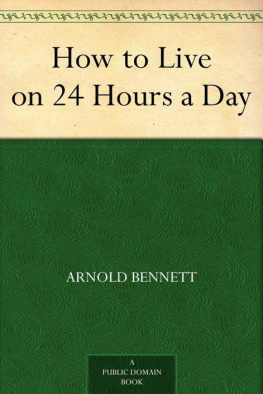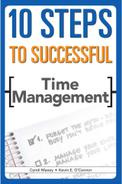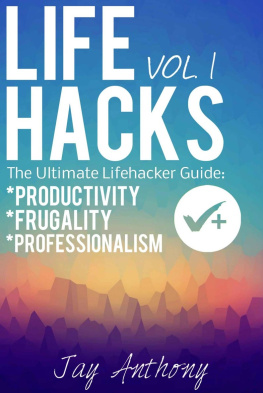SLIPSTREAM TIME HACKING
HOW TO CHEAT TIME, LIVE MORE, AND ENHANCE HAPPINESS
Benjamin P. Hardy
Edited by Garrett Stone
Cover Photo: Jane Barlow Christensen
Copyright 2015 Benjamin P. Hardy
Smashwords Edition
This book is intended to be shared with other readers! Please, share electronic files with other people without my permission! However, this copyright is mine and I would appreciate credit and authorship.
www.benjaminhardy.com
EPUB ISBN: 978-0-9970710-1-6
Paperback ISBN: 978-0-9970710-0-9
eBook formatting by FormattingExperts.com
Dedication
This book is dedicated first and foremost to my parents. They were my biggest cheer-leaders and advocates throughout my Kickstarter campaign. I was blown away by how much they cared about the success of this project.
I also dedicate this book to all those who made a $50 or more contribution to the Kickstarter. Thats extremely humbling that someone would contribute so much to my work.
Thank you so much! The following is the names of all of these backers: Susan Knight, Philip Hardy, Trevor Hardy, Jane Christensen, Brian Christensen, Kacey Roberts, Misty Anderson, Shanna Barney, Candida Hayes Morris, Marc Call, Jordan Young, Ben Ohai, Steven Zentner, Telvin Jeffries, Michael, Steve Downs, Debbilyn Day, Merrill J. Clark, and Jesse Conger. Thank you again! I hope you love the book!
The faster you move, the slower time passes, the longer you live.
Peter Diamandis
What is Slipstream?
There are two great countries of literature; the fantastic and the naturalistic. The border where these two countries meet however is decidedly hazy. This no-mans-land contains slipstream, books that are neither fish nor fowl. Its a tricky thing to pin down but like a certain other genre we could mention it is easy enough to point to. These are the books that contain fantastic elements but are not fantasies; that are naturalistic but not rigorously so. The popular literary term magical realism is simply a subset of these.
Martin Lewis
Slipstream will be explained in multiple ways throughout this bookmostly as a means of travel. However, as it relates to the quote above, slipstream is also a term used to explain a form of writing that meshes multiple genres. This book attempts to do the same. Unlike most business and self-help books which focus on narrow slices of similar ideas, I am leaping way outside the traditional elements of reference and dipping into untapped sources that are both speculative and scientific.
Despite the exploration of complex ideas, the premise of this book is actually quite simple: The faster someone moves toward a desired destination, the slower time moves for them. The goal of this book is direct: To compress the highest quality and meaning of life into the time each person has to live.
As a result of the content covered, many will discard this book offhand. However, if you stay with me through these pages, you will learn how you can exponentially extend and enhance your life experience. Indeed, in these pages are the keys to living thousands of years worth of life in a single lifetime.
Acknowledgements
I became fascinated by the idea of time primarily from two sources:
1) Brent Slife, my personality theory professor at Brigham Young University.
2) Christopher Nolans two films: Inception and Interstellar. After I walked out of Interstellar for the first time, I knew I would be writing a book about time. Two months later this book was finished.
Furthermore, many of these ideas came to me during research meetings with my Graduate Adviser, Cindy Pury. Her way of thinking has influenced how I approach thinking about ideas and particular problems.
Gary Vaynerchuck, Brendon Burchard, and Seth Godin are the people who tell me to create art and just do it. So, thanks to those three for the epic work they do.
Of course, my wife, Lauren, for putting up with my craziness. She is my favorite part of life. My lifes greatest accomplishment will always be that I convinced her to marry me. She holds me to a higher standard than Ill ever reach. Im grateful for that.
And to all of the Kickstarter backers who made this possible! Thank you so much for reading this book and supporting my writing! I hope more than anything that you get tons of out of this book.
The following are the names of all the people who contributed to my Kickstarter: Camille West Holiday, Caiden Sorensen, John James Ruppaner, Laura, Tito Momen, Ramon Kaspers, Aubrey Cowan, Kim-AH, Kamon Walker, Caleb Anderson, Jeremy, Stacy Nelson, Suzette Andrus, Daniel Blocker, Benjamin Gioia, Lavinia Takapu, Helen Faith, Cherene Giles, Chantal Hopper, Elizabeth Rustad, Martina, Mason, Spencer Stevens, Jenny Atwood, Kelsha L. Anderson, Debra Fowler, Jeff Kohler, Christopher Spencer, Rebecca Thomas, Garrett Lee Benson, Wayne Beck, Stewart Felsted, Scott Nielsen, Cameron Royall, Will Leidheiser, Myrtede Alfred, Adam, Colin McCall, Selcuk Sami, Ashleigh Roberts, Glena Christensen, Joseph Draschil, Kristy DeGraaf, Jake Fellows, Ryan Day, Garrett Despain, Evan Zislis, Amanda W., Sierra Flanary Pack, Jennifer Jones Smith, Diego Dante, Landon Boothe, Jay, Mary Ridler, Kapali Kiaha, Jeffrey Siegel, Seth Brink, Nathan Sellers, Michelle, Carson Barlow, Adam Lefler, Matthew Chicky, Benjamin Lusk, Thomas Mark Zuniga, Geoffrey Jackson, Lisa Imogen Eldridge, Jacob, Nick Furness, Cortney, Lee Hale, Rex W. Hardy, Jason H. Taylor, Rashad Riman, Jes Myrick, Greg, Joan Hartsough, Richard Rossi, Doug Cartwright, Jessica Hobbs, Tyler Merrell, Leah Lusk, Jordan J. Overman, Jaye Segura, Spencer Merrell, and Mitchell Wilkins.
Welcome to Your Future
Chapter 1
A More Accurate Measure of Time
Contents
A light-year is a unit of length used informally to express astronomical distances. It is the distance light travels in one calendar yearapproximately 5.9 trillion miles. Because the word light-year includes the word year , the term is often misinterpreted as a unit of time. However, a light-year is not a measure of time at all, but rather, a measure of distance traveled.
For instance, light travels from the earth to the moon in 1.29 light-seconds, which means the moon is 1.29 light-seconds away. The Sun is 8 light-minutes away. Mars is 12.7 light-minutes away. Proxima Centauri (the nearest star) is 4.3 light-years away. The other side of the Milky Way galaxy is 52,000 light-years away. Each of these are measures of distance rather than a measure of time.
A More Accurate Description of Time: Distance Traveled
In the daily human experience, time is not recognized as a measure of distance, but rather, as the duration of elapsed change. We view time in seconds, minutes, hours, and days. Not in kilometers or miles. But what if we did measure time as a distance? How would our lives look? What if rather than focusing on how long something took, we focused on how far we went?
A friend of mine recently told me that he and his wife are planning a trip to Hawaii and hope to go in the next 15 years. His wife really wants to go, but between two jobs, bills, and a mortgage, the dream seems distant.
Indeed, to the average person, a big trip like one to Hawaii is a once-in-a-lifetime experience. If we were to look at time as a distance, rather than as the passing of years, my friends Hawaii trip is 15 years, distance away. Framed this way, you might consider now, or here, as your current location and there, or Hawaii, as a destination that is 15 years distant.
On my friends current trajectory, he will likely arrive in Hawaii around 15 years from nowafter spending countless hours at work punching the time clock. Inching forward. Now of course, Hawaii is not my friends only goal. But much of these 15 years will be spent thinking about and wishing he was in Hawaii.

